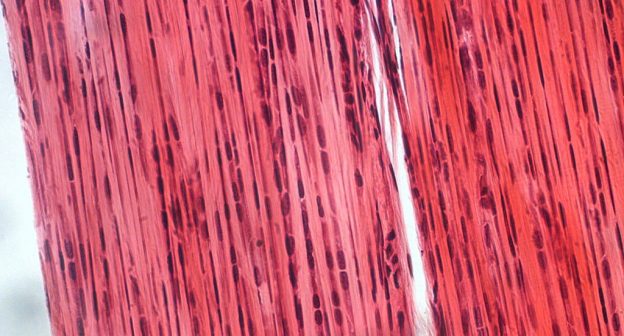Plastic clothing.
Sounds cheap, right?
But when marketed as “NEW ULTRA HIGH-PERFORMANCE THERMO-LINED ATHLETIC GARMENTS OF THE 21ST CENTURY” – people seem buy em.
Well, now you’re eating your plastic clothing fibers any time you have seafood these days. To me, this is just another rush-to-market-new-technology fail.
The Micro Fiber Problem
All of this new clothing-tech appears to be a BIG problem. When you wash your clothes, the fibers that make up your clothes exit your machine and usually go into your local sewage system and travel downhill to the sewage treatment plant. Some of those fibers get filtered out at the wastewater treatment plant and some make it past filtration and end up in the ocean (assuming you’re living near the coasts or a major river).
Once in the ocean, the synthetic fibers don’t break down. They just get filtered by fish, shellfish, and mollusks. Then we eat them.
Are All Synthetic Clothing Materials Bad For The Ocean?
The problem currently appears to be focused on microfiber clothing. However, it looks like the jury is still out on whether or not traditional synthetic clothing materials are bad for the ocean. My thinking is that since they don’t break down as organic fibers do, they’re probably not that great in general.
Hi, our fleeces do contribute to the problem, and all fabrics shed during washing. Natural fibers eventually biodegrade and synthetic ones do not, adding to the growing plastic problem in our oceans. We're currently working to identify new types of fiber to reduce pollutants.
— Patagonia (@patagonia) November 17, 2019
I had to ask one more question..
New fabrics shed a large amount during the first wash, but little in subsequent washes. So it's possible that fibers from the 70's may be making it to our oceans. We do offer a Guppy Friend washing bag that filters synthetic fibers when items are laundered in it.
— Patagonia (@patagonia) November 18, 2019
Yoga Pants Are Bad – Well Most Of Them
It’s kinda funny that yoga pants in general, really fail at this one. I mean, when you think of Yoga you think of this world that’s so in-tune with the universe, mother earth, health, etc. And 90%+ Yoga Pants are basically made out of synthetic materials. So get the word out! Check yo yoga pants! Maybe we should hashtag it: #CheckYoYogaPants
Solutions
Try To Buy Natural Fiber Clothing
When you’re shopping for clothing, check the tags or find out what the garment is made of. See if they are made out of natural or synthetic material.
Synthetic materials include:
- Polyester
- Nylon
- Acrylic
- Spandex
- Olefin
- Neoprene
- Micro fiber
- Vinylon
Natural materials include:
- Cotton
- Wool
- Linen
- Bamboo
- Hemp
- Rubber*
What About Rain Gear? Doesn’t It Have To Be Made From Synthetics?
Well, there was a time before plastic believe it or not. And clothing was being created for rainy and different environmental conditions. Keep reading, I reached out to a company below and found out that they sell organic fiber rain wear.
What If A Synthetic Material Is Created That Doesn’t Shed Fibers or The Fibers Breakdown?
This could be a good thing.
Natural fibers have their own issues. For instance, cotton farming on a massive level is usually bad for rivers and local ecozones. There’s a possibility that a synthetic fiber can be created that will have the smallest environmental impact.
Another important takeaway here is: Buy quality clothing or second-hand clothing. Either buy clothes that will last a lifetime or buy used clothes to help keep the demand low.
It’s funny – I have this Arrow brand dress shirt I found at the Goodwill in 2002-ish. I still wear it. It hasn’t faded or ripped yet. I’m still blown away by the shirt every time I launder it. I just stare at it for a few seconds and mutter, “Damn. This is one hell of a shirt!”
Companies That Make Eco-Conscious Clothing
This list will probably grow. And if you want to add your company to this list, reach out to me on Twitter @seanvwork.
Rapanui Clothing
I bought a t-shirt from Ecosia (the search engine that plants trees if you use it). I think they planted 25 trees on my behalf for buying the shirt. I knew they’d only source the most eco-responsible t-shirts, so I looked at the tag on the shirt and the company that made it is called Rapanui Clothing.
And they don’t just make t-shirts. They make jackets, beanies, socks, and hoodies.
Hey, yes we do 🙂 https://t.co/IpJrVKbtA5
— Rapanui® (@Rapanuiclothing) December 2, 2019
Website: rapanuiclothing.com
Pact
Pact is a U.S. company that’s also sticking with organic cotton. They produce t-shirts, hoodies, briefs, socks, and sweaters. Doesn’t look like they do jackets yet.
Website: wearpact.com
Vivo
Shout out to Rapanui Clothing for this find!
Vivo makes environmentally friendly footwear.
Website: vivobarefoot.com
One Last Thing: Drying Clothes
You really don’t need a clothes dryer. If you ever visit other nations, most people hang dry their clothes. I live in Southern California, so the dry air sucks away moisture pretty quickly. Some of my shirts dry in a couple of hours. Jeans can take a couple of days. If I put my jeans directly in the sun, they’ll dry in about 45 minutes (assuming I flip them once).
But there are two big advantages to air drying your clothes:
- Your clothes will last longer.
- Your clothes won’t need to be ironed.
- You’ll save a lot of energy (and a cheaper electric and/or gas bill).
Honestly, if everyone in the U.S. air-dried their clothes, we’d save 19,968,000,000 kilowatt-hours/year or keep 22,563,840,000 pounds of carbon dioxide out of the atmosphere (source).
3 kilowatt-hours a week (source).
128,000,000 million households in the United States (source)
384,000,000 kilowatts-hours / week
Featured image source: https://commons.wikimedia.org/wiki/File:Dense_connective_tissue-400x.jpg
Share This Content:
